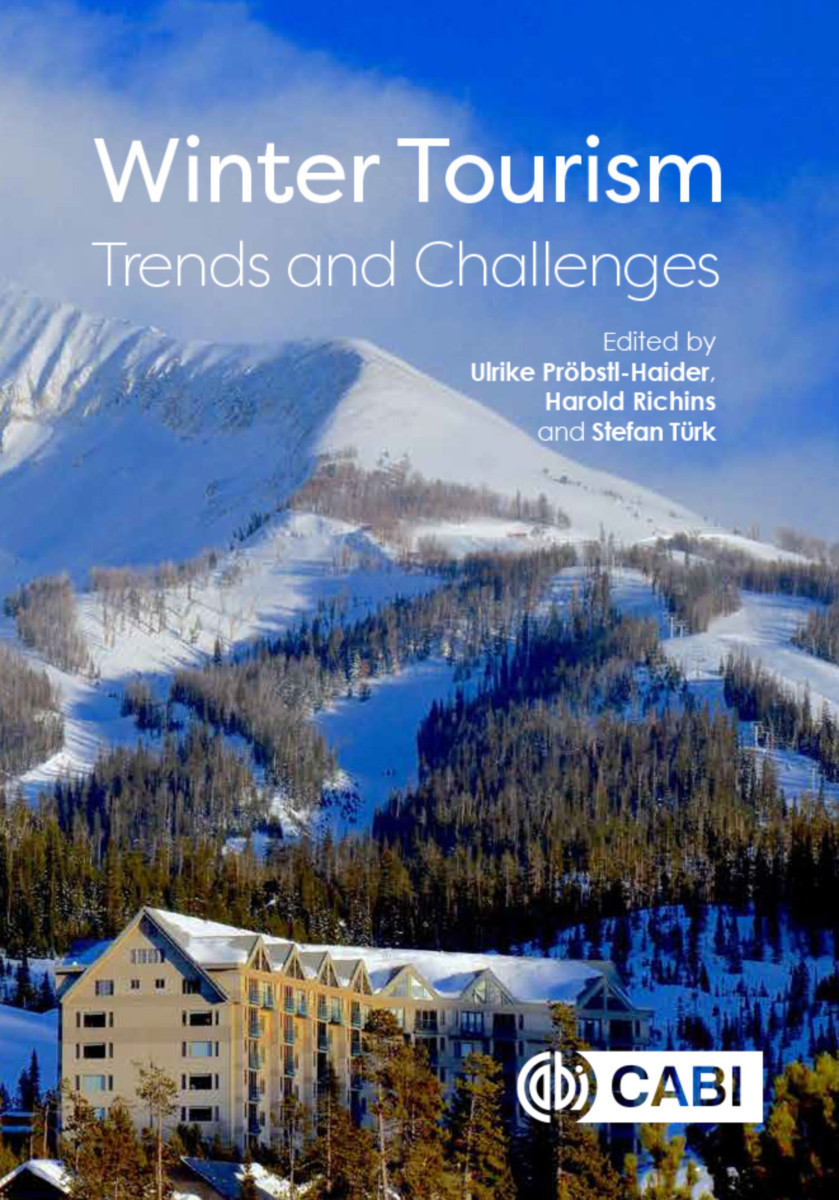Winter Tourism
Trends and Challenges
- Publisher
CABI - Published
25th November 2019 - ISBN 9781786395207
- Language English
- Pages 450 pp.
- Size 7" x 9"
- Request Exam Copy
Winter tourism has seen increased levels of investment in recent times, in an effort to reduce economic risk, address environmental concerns and adapt to the effects of global warming. New ski destinations are developing and merging with traditional ones to increase spatial distribution, while many established leading resorts are adapting their management models. Climate change adaptation processes are supported by the reduction of CO2 emissions and energy consumption in ski resorts. Current planning challenges include the increasing importance of scenic beauty, nature and sustainable development, as well as snow reliability, snow management and safety issues.
Destination planning also requires an in-depth knowledge about ski tourists and their preferences regarding destination choice, which is impacted by many factors including the aging society, changing leisure time habits and new target markets such as China and India.
This book is an essential reference for exploring these trends and the different approaches that are employed in the European Alpine region, North America, Scandinavia and Eastern Europe. It:
- showcases best case examples and good practice regarding environmental management in ski areas;
- discusses current trends and adaption strategies in winter tourism, with reference to skiers' preferences; and
- analyzes future challenges for the market.
1: Winter Tourism Introduction: Motivation and Scope of the Book
Part I: Winter Tourism Forces and Challenges
2: Winter Tourism Forces and Challenges: Spatial, Socio-Cultural and Economic Issues and Climate Change Adaptation
3: Winter Sport Destinations, Spatial Planning and Protected Areas
4: Winter resorts, Indigenous Rights, and First Nations Planning for Traditional Territories in British Columbia, Canada
5: The Different Shades of Snow - An Analysis of Winter Tourism in European Regional Planning and Policy Documents
6: Winter Tourism in the Alps and the Implications of Climate Change
7: Climate Change Risk Perceptions in Nature-Based Tourism Systems: A Case Study from Western Maine
8: Alpine Winter Tourists’ View on Climate Change and Travel Mobility
9: Climate Change Adaptation – A New Strategy for a Tourism Community: A Case from the Bavarian Alps
10: Economic Relevance of Different Winter Sport Activities Based on Expenditure Behaviour
11: The Knockout-Deal – Pricing Strategies in Alpine Ski Resorts
12: Snow Sports in Schools and its Importance for Winter Tourism – A Descriptive Study in North Rhine Westphalia
13: The Impact of Commercial Snowmobile Guiding on Local Communities
14: Sustainable Winter and Summer Mountain Tourism Destinations: Idealism or Possible Reality? The Perception of the Millennial Generation Regarding Achieving Success of Sustainability of Whistler, BC, Canada
Part II: Winter Tourism Experiences
15: Winter Tourism Experiences: Visitor Trends, Preferences and Destination Choice; Diversification of Experience Offers; Segments and Marketing
16: Winter Recreation Trends in the Swedish Mountains – Challenges and Opportunities
17: A Matter of Culture: How cultural differences shape skiing motivation, behaviour and destination choice
18: Winter Visitors’ Perceptions in Popular Nature Destinations in Iceland
19: Winter Recreationist Motivations: Motorised, Non-Motorised and Hybrids
20: Alternative Outdoor Activities in Alpine Winter Tourism
21: Winter Tourism Management and Challenges in the Tatra National Park
22: Chinese Guests in Alpine Destinations – What are They Looking for? A Case Study from Switzerland Regarding Product Preferences and Landscape Perception
23: The Two-Year Tourist: Lifestyle Migration in Whistler, British Columbia
Part III: Winter Tourism Development and Sustainability
24: Winter Tourism Development and Sustainability: Regional Development, Ownership and Infrastructure; Environmental Management and Sustainability; Historical and Future Perspectives, Trends and Implications
25: Development of Downhill Skiing Tourism in Sweden: Past, Present, and Future
26: The Challenges of Sustainability in the Management of Ski Resorts: The Experience of the Dolomites
27: The Role of Cable Cars and Ski Lifts as Key Innovations in the Evolution of Winter Tourism
28: Merging of Ski Resorts, Monopolisation and Changes in Ownership Structures: The Case of Whistler
29: How to Manage Ski Resorts in an Environmentally Friendly Way – Challenges and Lessons Learned
30: Tourism Diversification in the Development of French Ski Resorts
31: Preferences for Renewable Energy Sources Among Tourists in the European Alps
32: A Resort Municipality Without Residents? The Case of Jumbo Glacier Resort in the Purcell Mountains of British Columbia, Canada
33: Winter Tourism and Seasonality in Iceland
34: Safety, Risk and Accidents – Experiences from the European Alps
35: Collaboration and Leadership as Success Factors of a Ski Resort – A Multiple Case Study from Finland
36: Winter Tourism: Lost in Transition? The Process of Transformation and Inertia of the Ski Industry and Places in the French Alps
Ulrike Pröbstl-Haider
Ulrike Pröbstl-Haider is at University of Natural Resources and Life Sciences (BOKU), Vienna, Austria.
Harold Richins
Harold Richins is at Thompson Rivers University, Canada.
Stefan Türk
Stefan Türk is at Deutsche Sporthochschule Köln, Germany.


